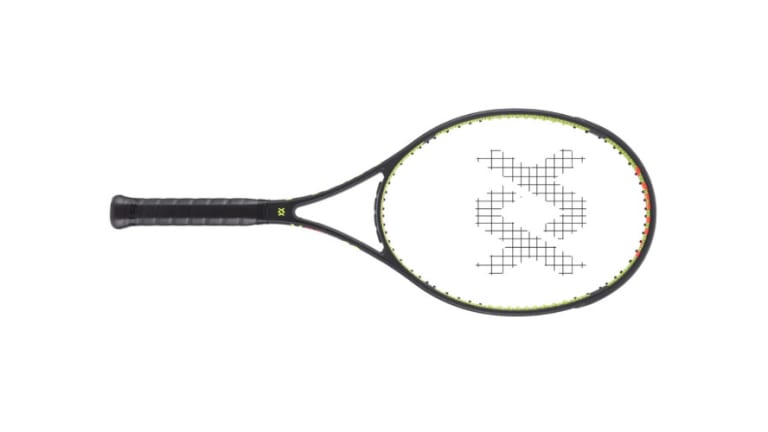In the realm of control-oriented, players frames the Volkl 10 line has carved out its own unique legacy. Perhaps not as household as the Pro Staff or Prestige, for decades it has offered players high-level precision with a clean, dependable response. Through numerous incarnations the frame has adapted to meet the changing needs and tastes of the market. While not every one hit the target, the speed and liveliness of its latest—the V-Cell 10—make it one of the franchise’s finer entries.
As the heavier of the two 10s—there’s a lighter 300g—the 320g feels like a crisper, more caffeinated version of Volkl classics like the Powerbridge 10 Mid and C10 Pro. Its beam is thicker and noticeably firmer, lacking the buttery feel. However, the upshot is it’s quicker and more forgiving. Many fans of those models—and I’ve been guilty of this—often lament that recent 10s don’t match the response of those standards. But why should it? Volkl still offers the C10. If that’s your ideal then look no further. This racquet has a different audience in mind.
Like its predecessors in the 10 line, the V-Cell is a versatile, sometimes demanding frame that rewards controlled aggression and clever tactics over raw baseline artillery. It plays a little bit like a hybrid frame that straddles a fence between vestiges of old-school playability and modern day power and spin.
The first thing that jumped out at me when playing with it was its quick handling. Racquets in its weight class typically don’t swing so easily. So the potential was there for big cuts to put extra juice and spin on shots. However, while it produced some heavy ground strokes, it didn’t consistently deliver the goods in that department. I found it didn’t naturally power through contact—certainly not as much as expected from a racquet approaching 12 ounces. As such, I would probably look to add more weight to the hoop to give the frame extra clout on groundies, and backbone when defending. And at a 320ish swingweight, there is room for customization.
With the ball in hand on serves, it was a different story. Since I didn’t have to turn around an opponent’s shot, I easily hit through the ball and took advantage of the accessible swing speed. It’s not a rocket launcher, but the head was lightning quick through the hitting zone resulting in good pace. Deliveries were easy to manipulate with plenty of bend. Kick serves constantly forced my opponent to retreat back behind the baseline or face returning the ball from above the shoulders. I found myself mixing up my serves more often than usual because so many were effective.
